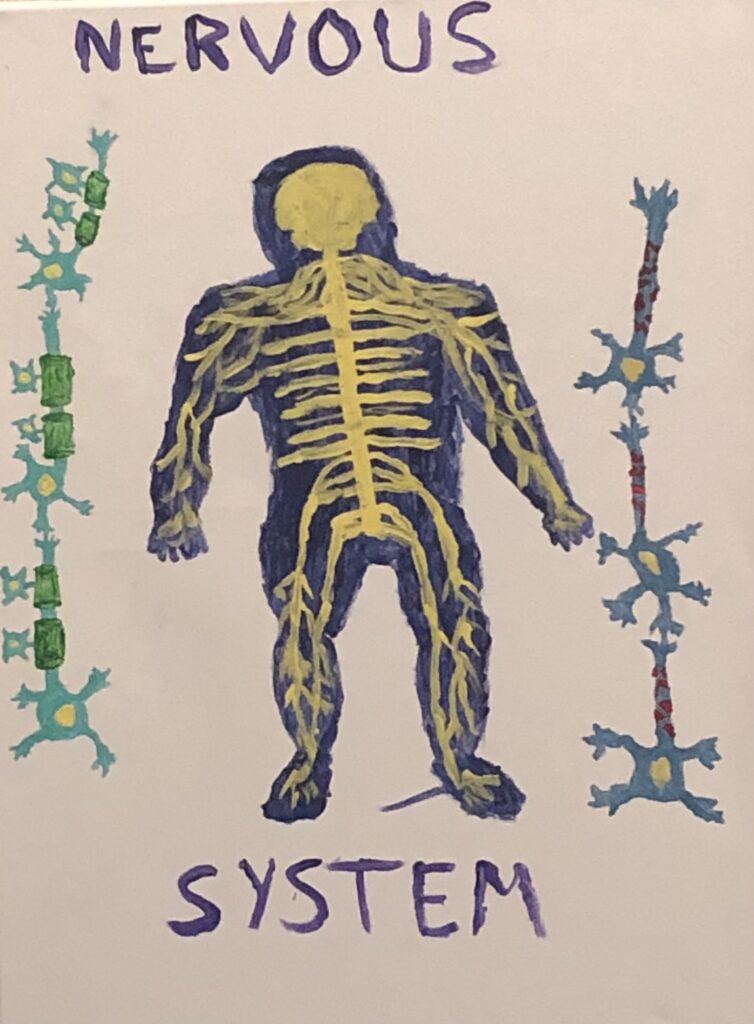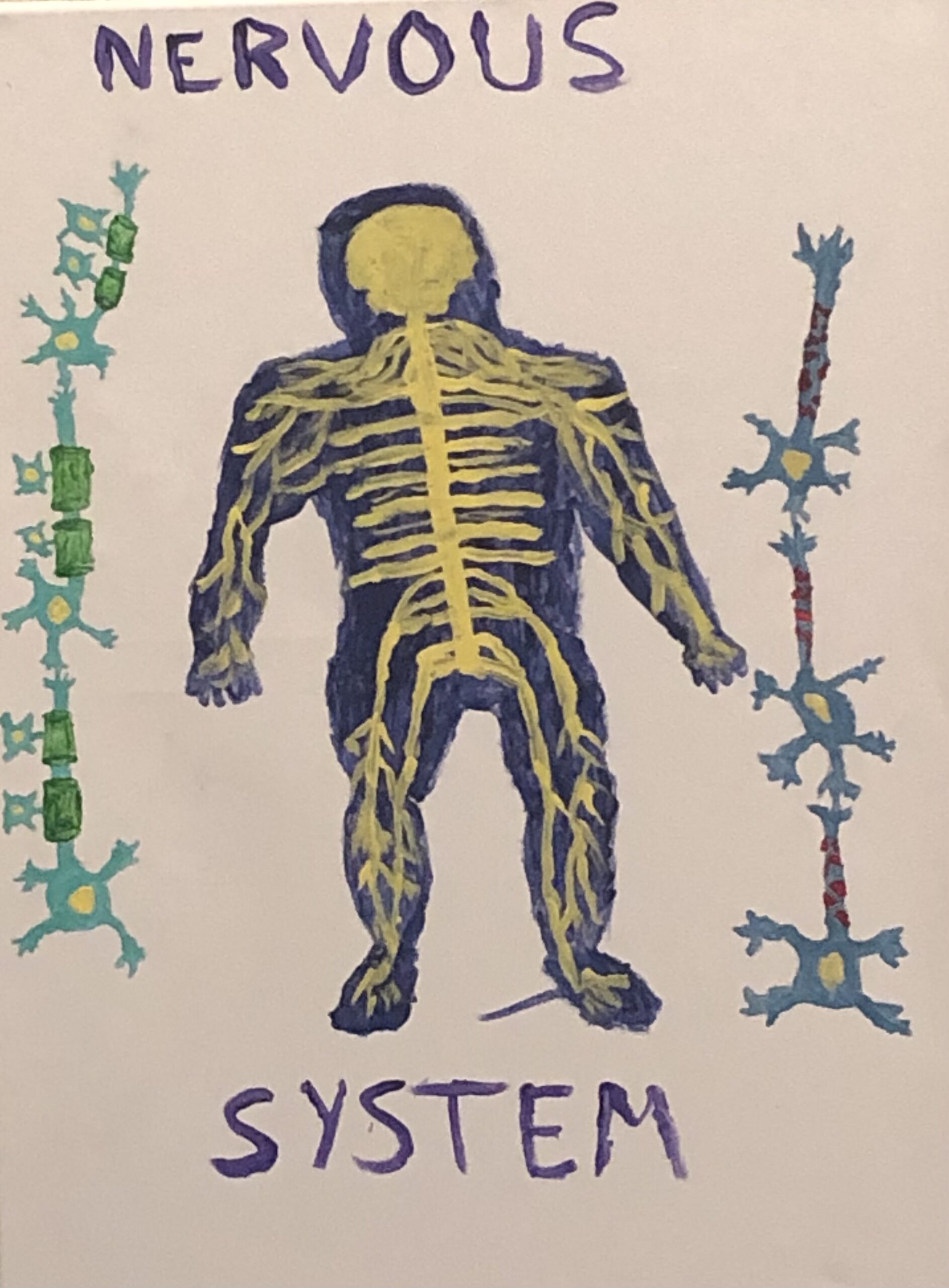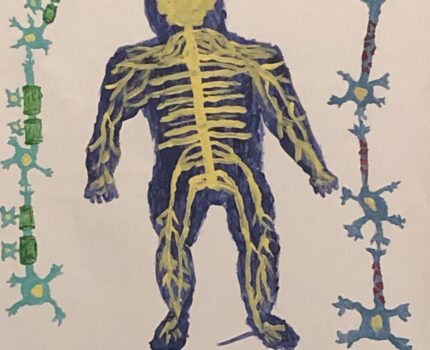Attached is a painting I did, demonstrating the overall nervous system in the middle. The nerve cells on the left side of the painting show a healthy string of neurons, with myelin sheaths and oligodendrocytes intact. On the right, depicted is the degenerative effects a disease like Multiple Sclerosis can have. The oligodendrocytes have been destroyed by an autoimmune response, leaving lesions where the myelin sleeves once were, and causing degenerative neural issues like blindness and (eventually) paralysis.



Patrick did his STEAM project on Multiple Sclerosis’(MS) effect on the nervous system, specifically myelin sheaths. His project covered the objective “how neurons carry an electrical charge.” It covered how this happens and how MS affects it. To depict it in his project he painted out the nervous system with nerve cells to the right and left of it. Those neuron cells to the left are normal and have healthy myelin sheaths. The ones to the right of the nervous system are affected by MS and unhealthily breaking down.
Myelin sheaths wrap around axons of neurons to insulate and protect them. They also act as a lipid based protective coating which assists with conducting electrical charges. MS, which is an autoimmune disorder, causes the body’s immune system to malfunction and attack myelinated axons in the CNS. These attacks cause damage to the myelin sheaths and over time the axons as well, preventing them from efficiently conducting electrical charges. This can cause relapse-remitting in patients with MS. It causes flare ups which can include blindness, paralysis, or other neuropathies. While there is no treatment for MS, there are a variety of immune regulating drugs that help provide some relief.